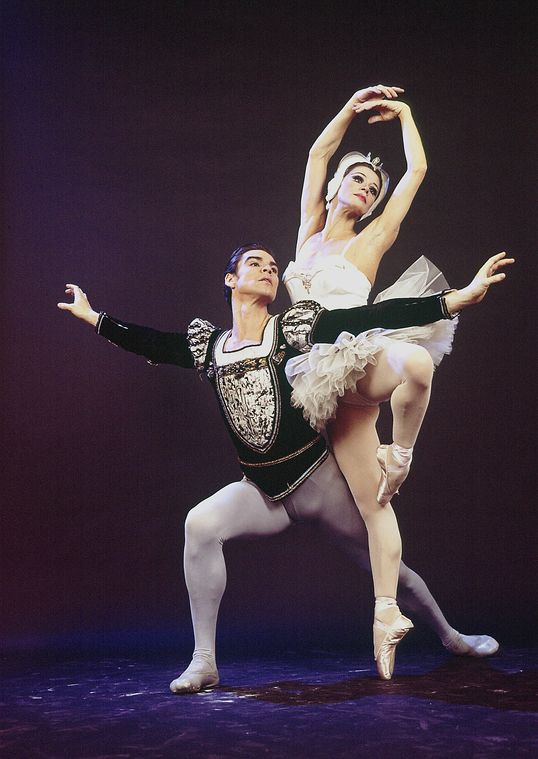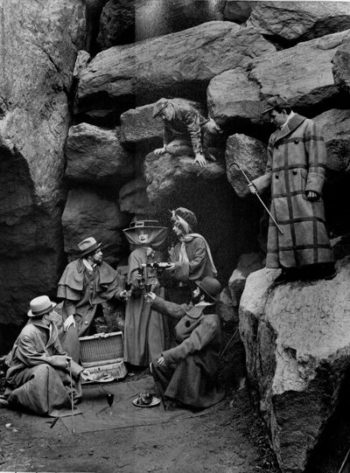Frederick Ashton’s Picnic at Tintagel is inspired by Mary Elizabeth Braddon’s popular Victorian novel Royal Mount, where sightseers picnic on Tintagel Castle’s ruins. (Discussion of Braddon’s Royal Mount is posted elsewhere on PicnicWit.com)
Ashton famed the narrative by contrasting the story of Tristan Isolde, retold in two timeframes, one Edwardian and the other in the Dark Ages. As the story opens, the Edwardians are picnicking amidst Tintagel’s ruins, where the lovers wander off for an affair. The narrative then shifts to the Celtic lovers and their deaths at King Mark’s hand, Iseult’s fiancé. Recovering from the impact of this tragedy, Ashton slyly rescues his Edwardians from discovery and the wrath of a cuckolded husband. All are frustrated, but no one dies.

Celtic lover. Tristan (Jacques D’Amboise) and Iseult (Melissa Hayden) are the doomed lovers in this production.
George Balanchine commissioned the ballet, which was first performed by the New York City Ballet in February 1952. Stage settings and costumes were by Cecil Beaton. Ashton chose Arnold Bax’s The Garden at Fand instead of his tone poem Tintagel.
Featured Image: George Platt Lynes. Picnic at Tintagel (1952), gelatin silver print. Houghton Library, Harvard University.
See George Balanchine. Complete Stories of Great Ballets (1954). Revised and enlarged by Francis Mason. Garden City, New York: Doubleday & Company, 1977); Mary Elizabeth Braddon. Mount Royal: A Novel, London: John and Robert Maxwell, 1882, https://archive.org/details/mountroyalnovel01brad; George Platt Lynes. Picnic at Tintagel. Cambridge, MA: Houghton Library, Harvard College Library, Harvard University, 1952; William B. Hannam. Arnold Bax and the Poetry of Tintagel 2008

